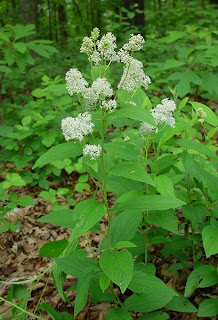MARIJUANA

Latin Name: Cannabis sativa
Alternate Names: Hemp, Ganja, Dagga, Indian Dreamer, Huo Ma Ren (Chinese), Pot, Grass, Bhang (Hindi), Hashish, Vijaya (Sanskrit)
Family: CANNABIDACEAE
Parts Used: Flowering tops of female plants, resin, seeds.
Properties: Analgesic, Anesthetic, Anodyne, Anticonvulsant, Antidepressant, Anti-inflammatory, Antispasmodic, Aphrodisiac, Anaphrodisiac, Bronchial Dilator, Cataleptic, Cerebral Sedative, Demulcent, Emollient, Euphoric, Hallucinogen, Hypnotic, Hypotensive, Laxative, Nutritive, Oxytocic, Sedative, Vermifuge, Yin Tonic.
Internal Uses: AIDS, Anorexia, Asthma, Cerebral Palsy, Chemotherapy Nausea, Childbirth, Constipation, Cough, Depression, Dysmenorrhea, Epilepsy, Glaucoma, Insomnia, Migraine, Multiple Sclerosis, Muscle Spasms, Nausea, Nervousness, Neuralgia, Nightmares, Pain, Paralysis, Paraplegia, Restlessness, Rheumatism, Wasting Diseases, Worms
Internal Applications: Tea, Tincture, Smoked. Not soluble in water as a tea.
The buds are useful for all the above uses except constipation, worms and wasting diseases, for which seeds are more applicable. All properties apply to the buds, except demulcent, emollient, vermifuge, laxative nutritive, and yin tonic. Both the buds and seeds are a hypotensive. It can be an aphrodisiac, but also an anaaphrodisiac, depending on dosage and circumstances.
The buds are used for spasmodic coughs and spastic paralysis.
The buds are useful for all the above uses except constipation, worms and wasting diseases, for which seeds are more applicable. All properties apply to the buds, except demulcent, emollient, vermifuge, laxative nutritive, and yin tonic. Both the buds and seeds are a hypotensive. It can be an aphrodisiac, but also an anaaphrodisiac, depending on dosage and circumstances.
The buds are used for spasmodic coughs and spastic paralysis.
Topical Uses: Muscle Spasms
Topical Applications: Poultice for muscle spasms.
Culinary uses: Buds are used in baked goods, spaghetti, butter and candies. Needs to be processed with oil in order to be effective. Seeds have no psychoactive properties and are used in baking, to make cheese, soup, cereals, vegetable protein burgers, and ice cream. Hemp seed oil is used in a similar way as Flax seed oil.
Energetics: Sweet, Neutral.
Chemical Constituents: Buds contain cannabinoids (tetrahydrocannabinol), flavonoids, essential oils, alkaloids (cannabisativine, muscarinem, trigonelline), calcium. Seeds contain protein, lipids, choline, inositol, enzymes. The seed oil contains essential fatty acids.
Contraindications: Though it has been used medicinally for centuries, it is currently illegal to grow or possess in many countries and can result in imprisonment and/or loss of property. May affect some people adversely and induce paranoia and personality deviations as well as short term memory loss and perceptual distortions. Not recommended in unsafe settings or when driving or operating machinery. In general smoking anything can damage lung tissues, and though cannabis has been used to help asthma and bronchitis, smoking it can actually aggravate those conditions. Can inhibit testosterone production and cause hypoglycemic states. Dry mouth and eyes are a common side effect.
Comments: Stalks are used for fiber as clothing, rope, sails and paper. Its fiber is absorbant, insulating and very strong. Oil from the seeds is used to make paint, varnish, lamp oil and fuel for automobiles and airplanes. The seeds are relished by birds and encourage singing and mating. Products made from sterilized seeds are legal and available in U.S.
The genus name, sativa, means 'with a long history of cultivation'. Native to Asia, Marijuana seeds were first brought to America in 1632 by the Pilgrims. By 1762, Virginia farmers were penalized for not growing this plant, as it was an important and useful economic crop. Between 1840 and 1900 over a hundred published papers recommended Marijuana as medicine. Marijuana can be used as paper, fuel, fabric and even food.
The genus name, sativa, means 'with a long history of cultivation'. Native to Asia, Marijuana seeds were first brought to America in 1632 by the Pilgrims. By 1762, Virginia farmers were penalized for not growing this plant, as it was an important and useful economic crop. Between 1840 and 1900 over a hundred published papers recommended Marijuana as medicine. Marijuana can be used as paper, fuel, fabric and even food.

